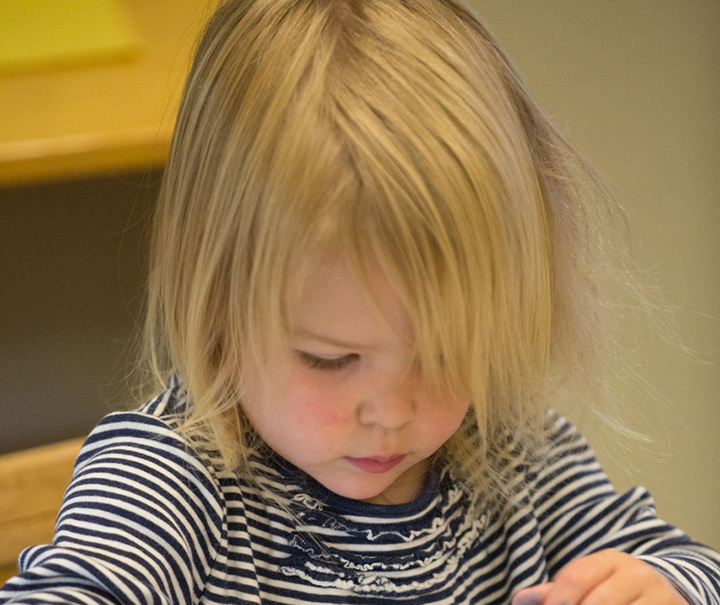By Megan Jones, Cindy Finch and Jane Dunbar
Below you will find an article written by Jane Dunbar in 1981 and since re-printed, posted, handed out and referred to COUNTLESS times at The Children’s School.
I always find it so wonderful that these things (usually typed up on a typewriter) are still so relevant for our practice here at TCS.
This article was printed in our TCS Newsletter and posted on our website in 2009 along with the comment from Cindy Finch.
Holidays with Young Children, part 2 By Jane Dunbar (1981)
Thanks, Jane, for putting these thoughts on paper almost twenty-five years ago. I have referred to them often while parenting young children. The ideas and activities truly exemplify what we value for young children at TCS: experiences that nurture and stimulate thinking; accommodate and support children’s development; and, provide a comfortable, reliable, and predictable environment to help children clarify, order, and make sense of the world!—Cindy Finch
Choices! Choices! Choices! As we head into this holiday time we are, as parents and teachers, bombarded with the need to make decisions that will shape the experience your child has this holiday and the feelings that will color his memories. If our goal is a rich, meaningful, joyful experience for the child, it behooves us, I feel, to take a few moments to look at the season from the point of view of your young child.
First I want to stress “your” young child. If the season’s activities are to meet your child’s needs, they must be structured according to what you know of your child. An activity that is meaningful and rich for one child may very well be overwhelming, disinteresting, or exhausting to another. There are not set models that work. Each of us, using our knowledge and sensitivities, must build a series of experiences, step by step, continually asking ourselves questions that focus us back to our own child, his needs, his wants, his unique ways of experiencing. Next I stress your “young child,” this time with the emphasis on “young child.” It is awing to really think how little experience three, four, and five year olds have with this holiday… perhaps two year’s memories and even those are hazy. This insight gives us lots of permission not to feel the weight of tradition. The child has had very little “tradition” and I imagine most memory focuses more on those things rich, meaningful and joyous in an activity rather than on the particular activity itself.
With those thoughts in mind, perhaps some of the following questions will be helpful when choosing holiday experiences:
- Involvement. Three, four, and five year olds naturally are active and involved participants. How much of a doer can my child be in this activity? Does the project or activity match my child’s ability level? (Often those wonderful memories we have of an activity we enjoyed as a child was one that we enjoyed when we were older than our own child and we might do well to save it a year or two).
- Pace. What pace does my child prefer? Slow and methodical? Active but brief? Settled and quiet? Several short activities?
- Routine. Will an activity disrupt my child’s sense of order to the day? Will the disruption delight (add spontaneity)? If one activity fits, will two? Are two brief activities preferable to one long one?
After all this talk about realistically assessing your child’s needs, let me balance these thoughts with strong vote for humor. Treat your family to the best releaser of tension there is: laughter shared and fun together as you prepare for the magic of the season. Keep things simple and relaxed. Fill the moments with music and candlelight, laughter, gentle hugs, unexpected smiles. Let home reflect each family member with decorations made and put up by each member. Share tales of childhood traditions from the family grown-up(s), blending the old with the new. It may not all be like out of House Beautiful but it will be meaningful for each of you. That’s what the holidays are all about.
Some Holiday Activities for Families with Young Children
- Frosting cookies: These cookies are the ones that Grandma or a loving (child-oriented) neighbor receives with delight. Emphasis here is on the process, not the product. Special candies and sparkles to decorate gingerbread men with eyes, nose, mouth, etc. can be fun.
- Collage cards: Provide trays of special holiday materials, paper, and a glue bottle that is manageable. Your child can sign her name, if that is a skill she has developed. You may do the addressing with the child but she will love the walk to the mailbox to send it off (the sense of closure that comes from mailing them right after completion can be marvelous for a child—if it fits!).
- Paintings as gifts: Using a school painting or one done at home, the child can choose a ribbon to roll it with or may help you pick out a matting and frame. Perhaps she can tell you about her picture and you can write down her words to enclose with the gift.
- Playdough: Children love to make playdough and can do much of this themselves. Put a ball of red or green playdough into a baggy, tie it with a ribbon and you’ve made a wonderful gift for a friend. Playdough Recipe Bring to a boil: 1 cup water 3 Tbsp. oil 1 oz. Food coloring Remove from heat. Stir in and mix well: 2 cups flour 1⁄4 cup salt 1 Tbsp. alum Cool slightly, knead like bread to make smooth. *Snowflakes: Show your child (older preschoolers or primary age children) how to fold white paper and cut the folded edges. These are fun to add to the tree, to decorate a mirror, or hang from a string to float on midwinter breezes near a door or window.
- Dictated stories: A story can come spontaneously from your child or can be prompted by an interesting picture your child draws, a carpentry project, a collage. These stories make fun gifts and can be read back at a special family time.
- Drawn pictures: Children capture the magic and wonder of the holiday season in their art. Pictures can also be drawn (by older children) to go with traditional stories or songs about the holiday your family celebrates.
- Taped songs: Songs sung by your child and taped for gifts or for memories. (“I sounded like that? That’s not me!!”).
- Community trees: Take time to look at the ornaments on the City (Grove) or State (Capitol steps) trees. Lie under the tree and look up. How do you think this tree got here? Where did it come from? How old do you think this tree might be? How many people do you think decorated it? How long would it take?

